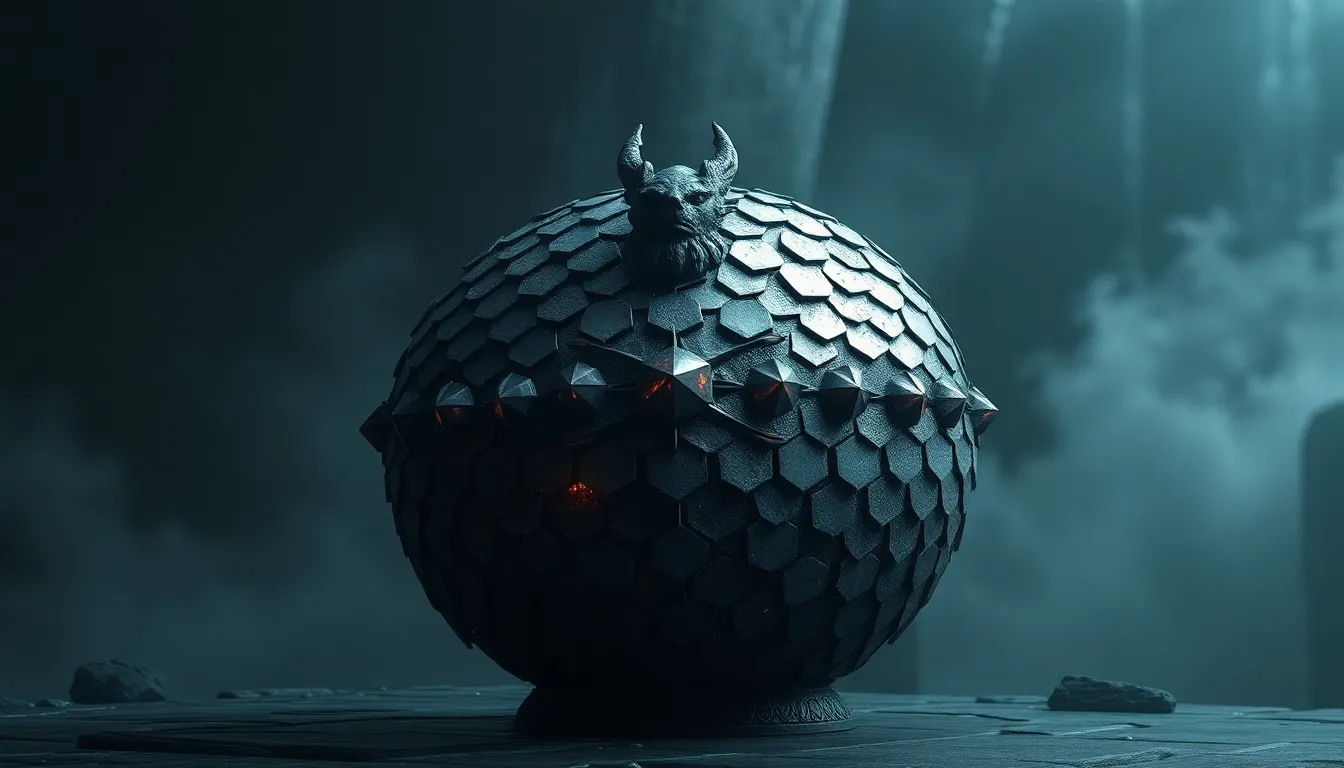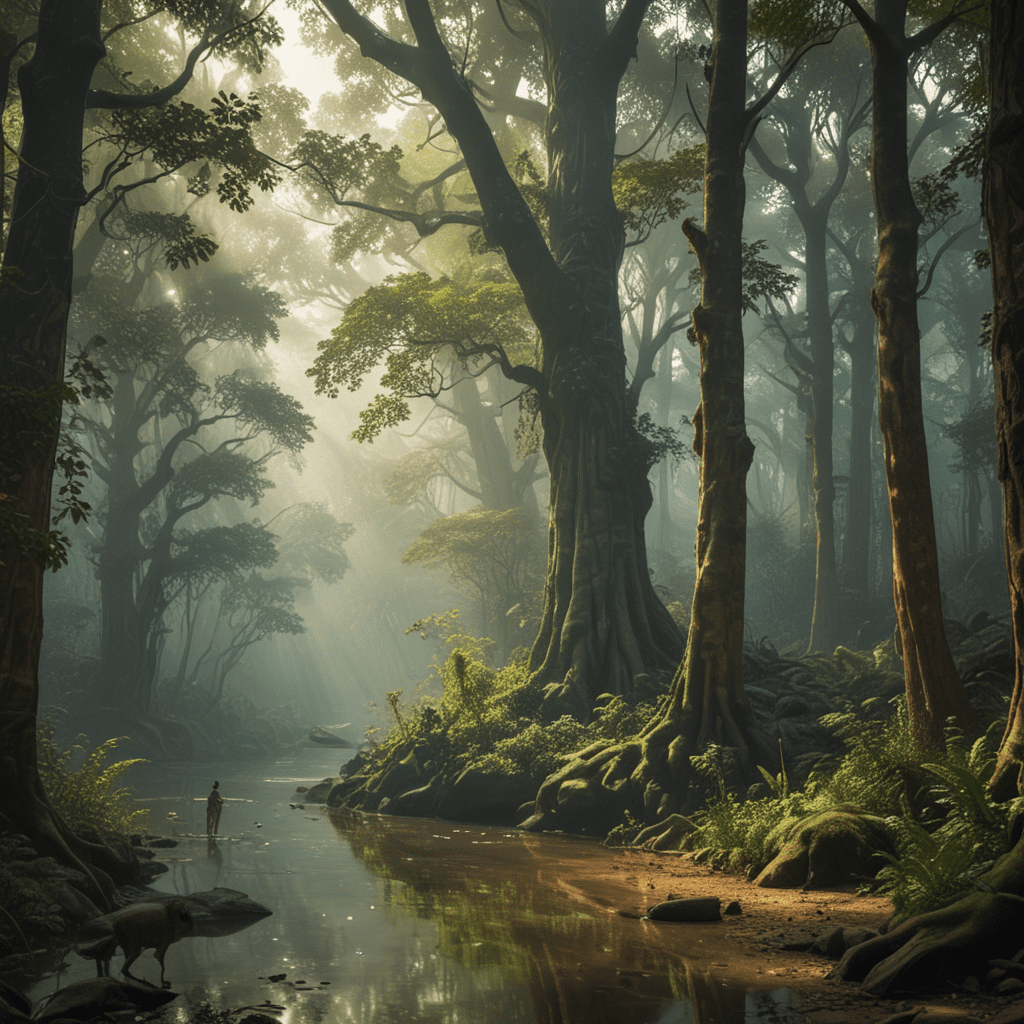The Most Bizarre Ancient Deities You’ve Never Heard Of
I. Introduction
Deities, or gods and goddesses, have played an essential role in ancient cultures worldwide. They embody the values, beliefs, and fears of the societies that worship them. While many are familiar with prominent figures like Zeus or Ra, lesser-known deities often present even more intriguing aspects of human history and spirituality.
This article aims to explore some of the most bizarre ancient deities that have slipped through the cracks of mainstream historical narratives. By examining these obscure figures, we can gain deeper insights into the complexity of human belief systems and the diverse ways people have understood the world around them.
II. The Misunderstood Beings: An Overview of Bizarre Deities
Bizarre deities are often characterized by their unusual attributes, roles, and the rituals associated with their worship. These figures might possess strange appearances, embody contradictory traits, or preside over unexpected aspects of life. Their significance can vary greatly across cultures, but they generally serve crucial functions in mythology and religion.
- Characteristics that define a “bizarre” deity:
- Unconventional appearances or forms
- Complex and contradictory roles
- Unique worship practices that may seem strange today
- Cultural significance of obscure deities:
- Representation of societal fears and hopes
- Reflection of the natural world and its unpredictability
- Influence on art, literature, and cultural practices
III. The Fish-God Dagon: The Aquatic Deity of the Ancient Near East
Dagon is one of the most fascinating deities from the ancient Near East, often depicted as a fish or a man with fish-like features. He was worshipped primarily by the Philistines and other cultures, with origins that can be traced back to the Sumerians.
Worship practices included offerings of grain and fish, and Dagon was considered a god of fertility and agriculture, symbolizing abundance. His bizarre attributes, such as being part fish, reflect the duality of life and death associated with water.
Dagon’s influence extended into later religions, inspiring aspects of Christianity and other monotheistic faiths, where the symbolism of fish took on new meanings.
IV. The Peculiar Practices of the Mesoamerican God Tlaloc
Tlaloc, the god of rain and fertility in Mesoamerican cultures, especially among the Aztecs, embodies the contradictory nature of deities. He was revered for his ability to bring life through rain, yet his moods could lead to destructive storms and floods.
Unusual rituals were performed to appease Tlaloc, including:
- Human sacrifices, particularly of children
- Offerings of precious items like jade and textiles
- Chants and ceremonies to invoke his favor
This duality of Tlaloc as both a giver and taker of life highlights the complexities of agricultural societies, where survival depended on the whims of nature.
V. The Eerie Cult of the Egyptian God Bess
Bess is a lesser-known deity from ancient Egypt, often depicted as a dwarf with a lion-like mane, who served as a protector of women and children. His unusual appearance and role in domestic life contrast sharply with the more prominent gods of the Egyptian pantheon.
Bess was associated with childbirth, fertility, and protection against evil spirits. The strange rituals surrounding his worship often included:
- Amulets and charms for protection
- Household shrines to invoke his blessings
- Celebrations and songs during childbirth
The cult of Bess reflects the importance of domesticity and safety in ancient Egyptian life, showcasing how even minor deities played critical roles in the community.
VI. The Trickster God Koki from the Indigenous Peoples of the Amazon
Koki, a trickster god revered by various Indigenous tribes in the Amazon, embodies the chaotic and unpredictable nature of life. He is known for his cleverness and ability to outsmart both humans and other deities, often leading to humorous or enlightening outcomes.
Trickster deities like Koki serve essential functions in folklore, such as:
- Teaching moral lessons through their antics
- Challenging social norms and expectations
- Providing a means of coping with the unpredictability of life
In contemporary times, Koki’s stories continue to resonate, reminding communities of the importance of wit and adaptability in overcoming life’s challenges.
VII. The Chaotic Nature of the Hindu Goddess Kali
Kali is one of the most complex and misunderstood deities in the Hindu pantheon. Often depicted with a fierce countenance, adorned with skulls and a tongue protruding, she symbolizes chaos, destruction, and the transformative power of time.
The worship of Kali includes various bizarre myths and tales, such as:
- Her battle against the demon Raktabija, where she consumes his clones to prevent them from regenerating
- Her dance of destruction that paves the way for rebirth and renewal
- Her dual nature as both nurturing mother and fierce warrior
Kali’s symbolism of chaos is crucial for understanding the cyclical nature of life and death in Hindu philosophy, making her a powerful figure in both ancient and modern contexts.
VIII. The Unusual Attributes of the Japanese God Inari
Inari is a unique deity in Japanese mythology, associated with rice, fertility, and agriculture. What makes Inari particularly interesting is the dual representation of gender, often depicted as both male and female, which reflects the fluidity of gender roles in shinto beliefs.
The oddities surrounding Inari include:
- Foxes, considered messengers, are often depicted alongside Inari
- Inari shrines are characterized by thousands of vermilion torii gates
- Rituals often involve offerings of rice and sake, emphasizing agricultural significance
Inari’s importance in Japanese culture highlights the connection between spirituality and agriculture, showcasing how deities can embody the fundamental aspects of human survival.
IX. The Forgotten Deities of the Celtic Pantheon: The Morrígan
The Morrígan is a complex figure in Celtic mythology, often associated with war, fate, and death. Her bizarre manifestations and prophecies make her a compelling deity in the Celtic pantheon. She is frequently depicted as a crow or raven, symbolizing her connection to battle and the afterlife.
The Morrígan’s roles include:
- Foretelling the outcomes of battles
- Influencing the fate of warriors and kings
- Embodiment of the land and its cycles of life and death
Modern interpretations of the Morrígan often reflect themes of empowerment and the complexities of female power in mythology, showcasing her lasting influence in contemporary culture.
X. Conclusion
The exploration of bizarre deities reveals a rich tapestry of human belief, reflecting the diversity and complexity of ancient cultures. These figures, often overlooked, provide valuable insights into how societies have grappled with the mysteries of life, death, and the natural world. By studying these lesser-known deities, we can better appreciate the shared human experience and the myriad ways in which people have sought to understand their place in the universe.



